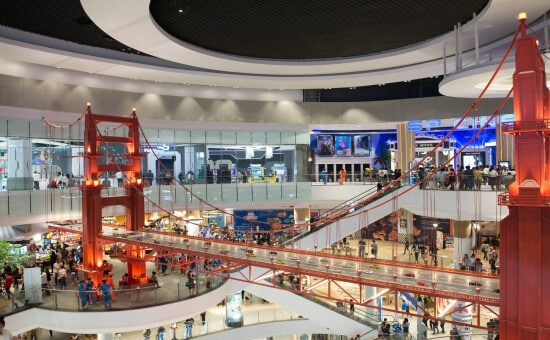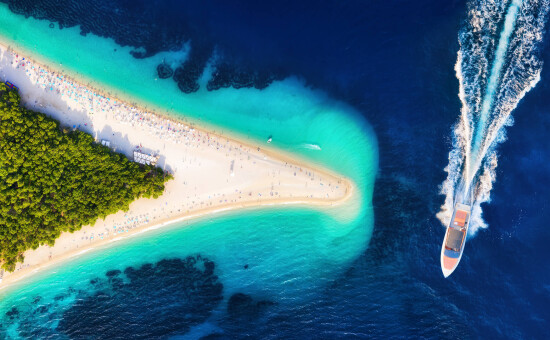Guide to Intramuros, Manila: 13 Spots You Need to See
Uncover the past and present of Manila’s Intramuros neighborhood. Read more to discover 13 spots you have to see when visiting.
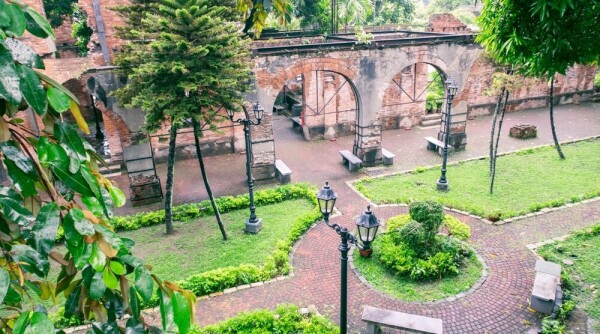
Even though Manila — the vibrant capital of the Philippines — is modernizing at a rapid pace, its premier attraction is still one of its oldest: a section that is aptly called Intramuros. A literal translation from Spanish means “within the walls.” Considering it was the Spanish who built the place, it’s a fitting description for this walled neighborhood that was once the center of Spanish activity.
These days, Intramuros is the site of some of the most interesting historical and architectural tourist attractions in Manila. Below are 13 of the most visit-worthy spots in Intramuros, along with a description of why you should see them for yourself.
A brief history of Intramuros
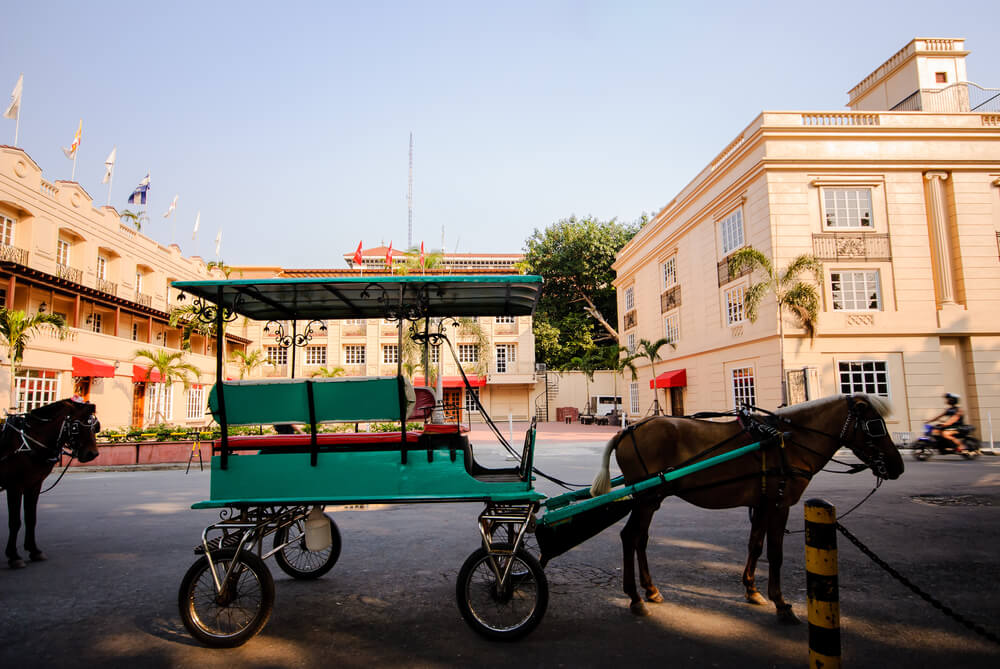
To fully appreciate Intramuros’ importance both to Manila and the Philippines, a brief history lesson is in order. Knowing its role and context in history will transform the quaint stone walls into a living history book.
Built by the Spanish in the late 16th century to protect the city from invasion, Intramuros was originally the seat of government of the Captaincy General of the Philippines. Within its protective walls, they built numerous universities, churches, and other notable buildings. Its port served as a hub for the import and export of goods.
After the Spanish-American War in 1898, the Philippines came under American rule, serving as a fortified outpost until December of 1941, when it fell to invading Japanese forces.
The battle resulted in the retreat and eventual surrender of American and Filipino troops, who were subjected to the ill-fated Bataan Death March.
In 1945, American and Filipino forces returned, liberating the city at the cost of over 100,000 Filipino, Japanese and American casualties in the one-month-long Battle of Manila.
The heavy bombardment also resulted in the near complete razing of the city, with the San Agustin Church the sole surviving building.
Having an idea of the past glory and struggles of this compact neighborhood surrounded by the modern metropolis of Manila, will no doubt enhance your visit to the sites listed below.
Fort Santiago
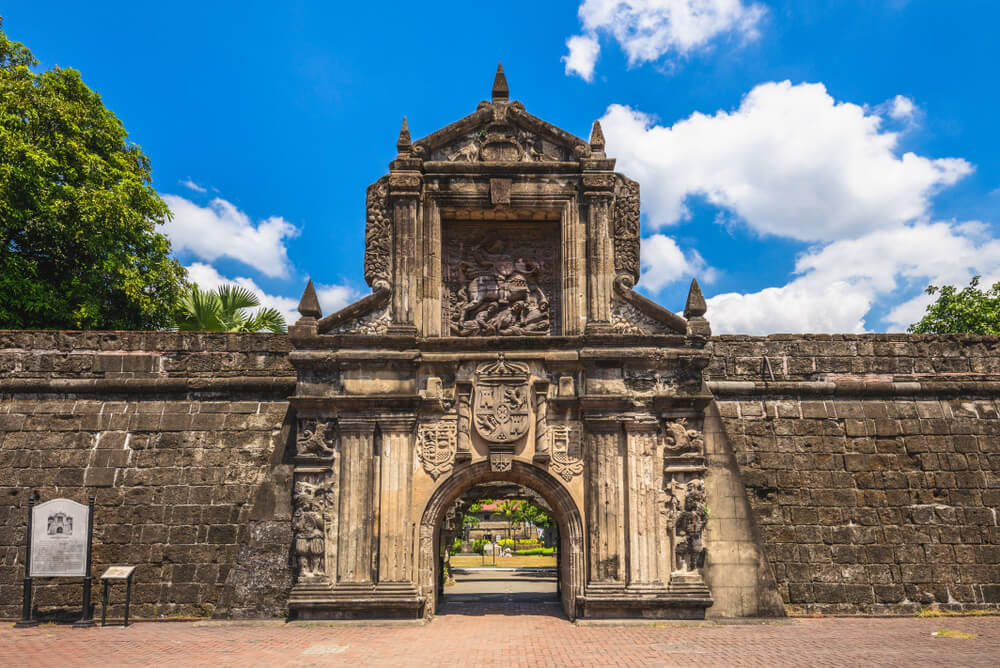
The quintessential stop on a tour of Intramuros is the mighty garrison of Fort Santiago. To this day, it still provides a commanding view of the mouth of the Pasig River.
It was once the premier fortification, home to batteries of heavy cannons, as well as a storehouse for spices and other valuable goods. Many prisoners were held in its dungeons, including national hero Jose Rival, who fought against colonial rule and was imprisoned here before being executed.
Today, Fort Santiago sees far more tourists than cannonballs.
The park is a historical landmark that features a visitor’s center and the Rizal Shrine. However, most visitors are content to take a leisurely stroll around the park and ponder over the contrast between the ancient stone bastions and the modern city that lies just across the river.
The fort’s various dungeons, palisades, and ornate reconstructed gates make for some great photo opportunities and serve as a distinct tribute to the extensive history that took place on this site.
San Agustin Church
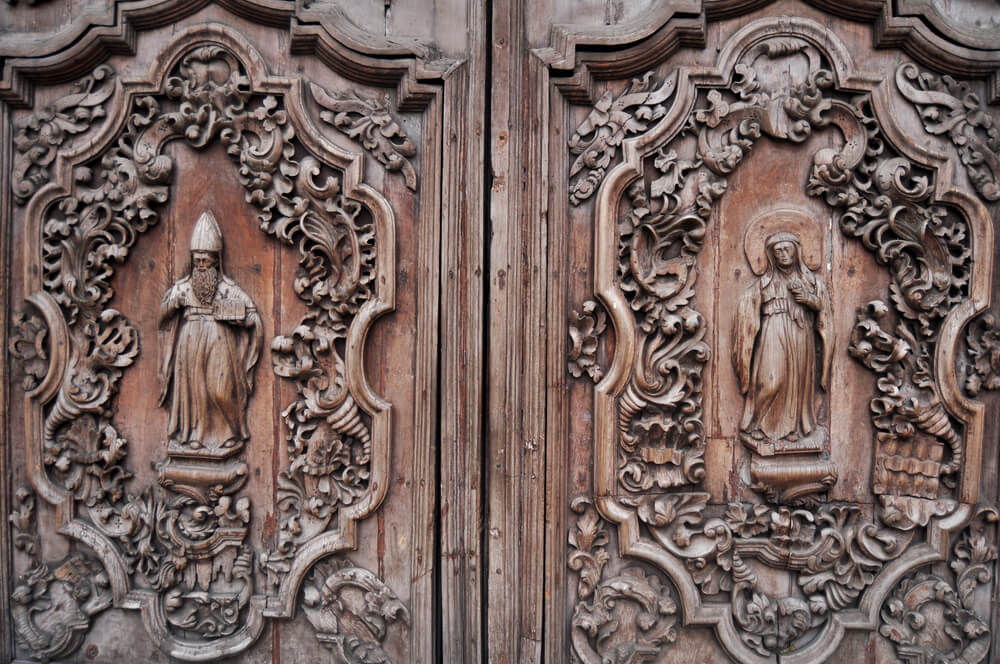
Technically known as the Archdiocesan Shrine of Nuestra Consolación y Correa, this massive house of worship was the only one to survive the tragic razing of the city in 1945.
Built in 1607, this is the oldest stone church in the country. As such, it is one of only four churches that make up the collective UNESCO World Heritage Site: Baroque Churches of the Philippines.
If its resilience through the ravages of time and war doesn’t impress you, just step inside, and the incredibly ornate interior will. Designed by a pair of Italian architects, the cavernous space is filled with Parisian chandeliers, ivory insets, sunken panels that appear to be in 3D, and a massive pipe organ.
It’s easy to see why a recent online poll voted San Agustin Church the most beautiful building in the Philippines.
The Manila Cathedral
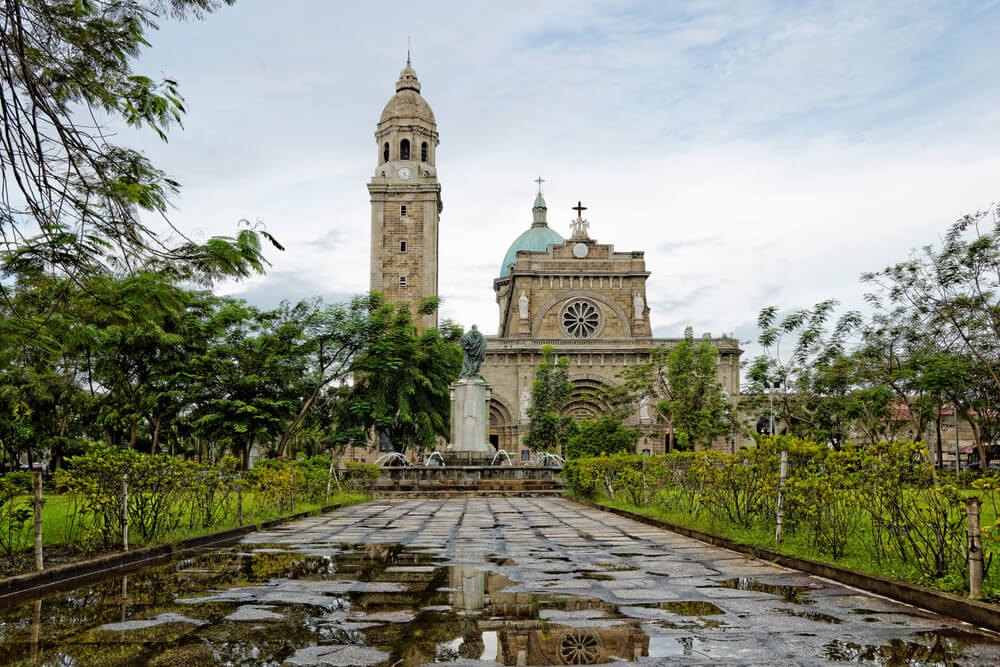
If visiting religious buildings is your thing, you won’t want to miss the enormous Manila Cathedral.
Though the current structure only dates back to the late 1950s, it is the eighth iteration of a series of churches that were built — and subsequently destroyed — on this site.
It’s an active Catholic house of worship, and a famous one at that, where several former presidents have lied in-state before their funerals. It also has the distinction of having been visited by the Pope in 1981.
The striking architecture will appeal to believers and non-believers alike. The northwest facade is a replica of the previous cathedral, and artistically sculpted statues adorn the sanctuary and the grounds. It contains over 130 stained glass windows designed by a local Filipino artist, bringing light and beauty to the interior. And some great photos for your feed.
Baluarte de San Diego
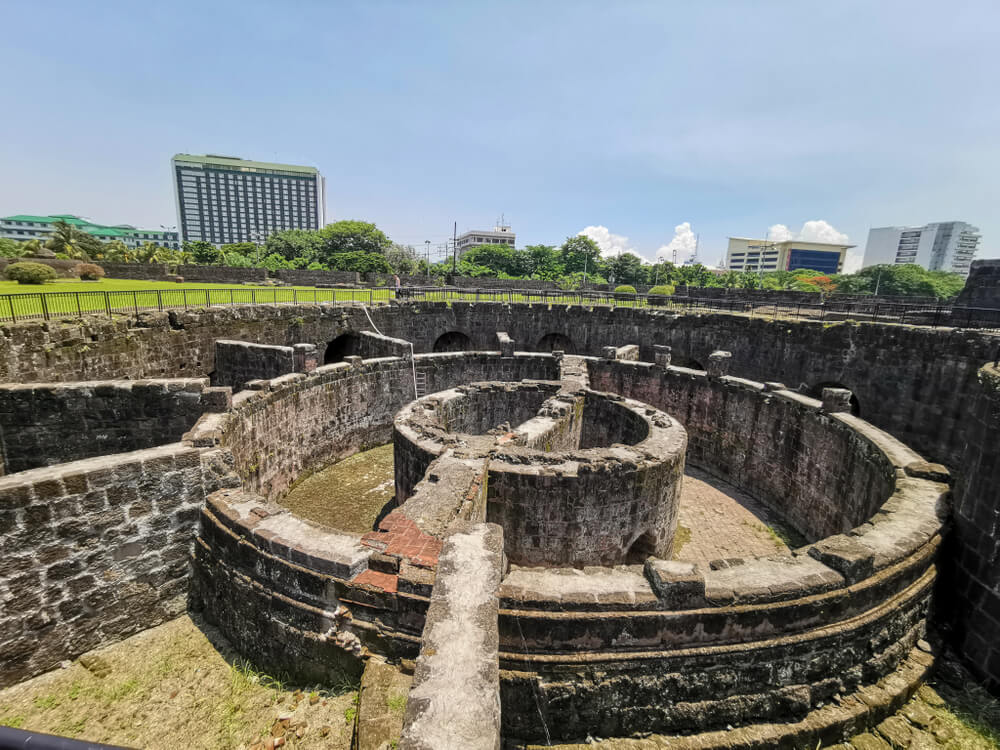
Of the many defensive structures in Intramuros, one of the most striking is the Bastion (Baluarte) of San Diego. Made up of the remnants of three concentric circles, it offers insight into the grand defensive prowess of its occupants.
Interestingly, for a time, the Bastion of San Diego was home to a miniature bronze replica of the Statue of Liberty — meant as a tribute to the American lives lost liberating Manila in WWII. The statue has since been moved, but even today, walking the ramparts summons echoes of the many lives lost throughout the centuries.
Baluarte de San Andres
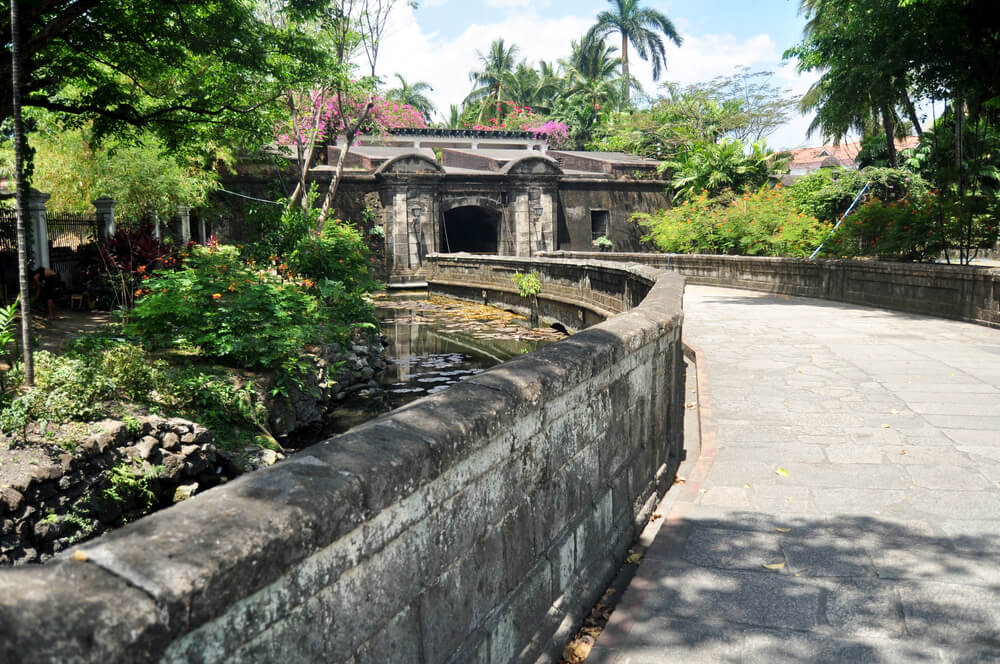
The Bastion of San Andres is located in the southeast corner of the city and was designed to defend the Puerta Real (Royal Gate) against invaders. While not as extensive as the Bastion of San Diego, its massive walls and conical watchtower make this a worthy stop on your Intramuros tour.
Casa Manila
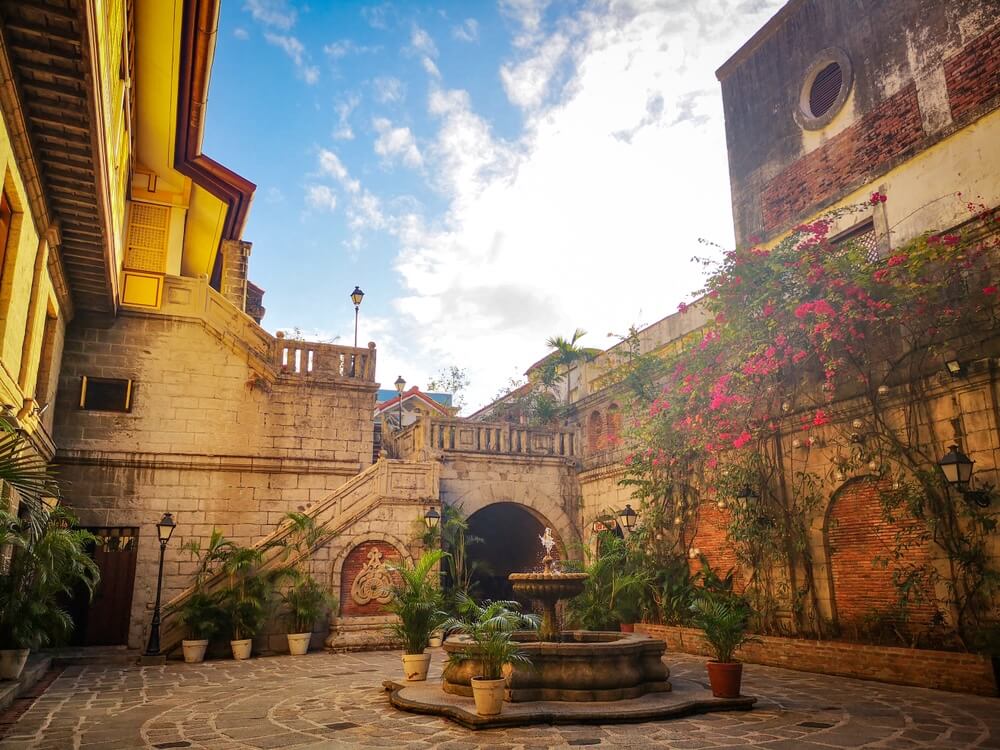
Boasting vine-smothered courtyards brimming with flowers, quaint arches, and alleyways, Casa Manila is arguably the most picturesque location in Intramuros.
Tucked away in the Barrio San Luis neighborhood and across from the San Agustin church, Casa Manila is a renovated stone and wood building turned museum.
Besides the charming fountains and balconies of the exterior, inside, you can browse an impressive collection of antique furniture from Europe and the Orient. Modeled after a grand mansion from the 19th century, Casa Manila depicts the opulence affluent Filipinos experienced under colonial rule.
If you have any interest in history, architecture, ceramics, art or design, Casa Manila should be high up on your list of sights when visiting Intramuros.
Barbara’s Heritage Restaurant
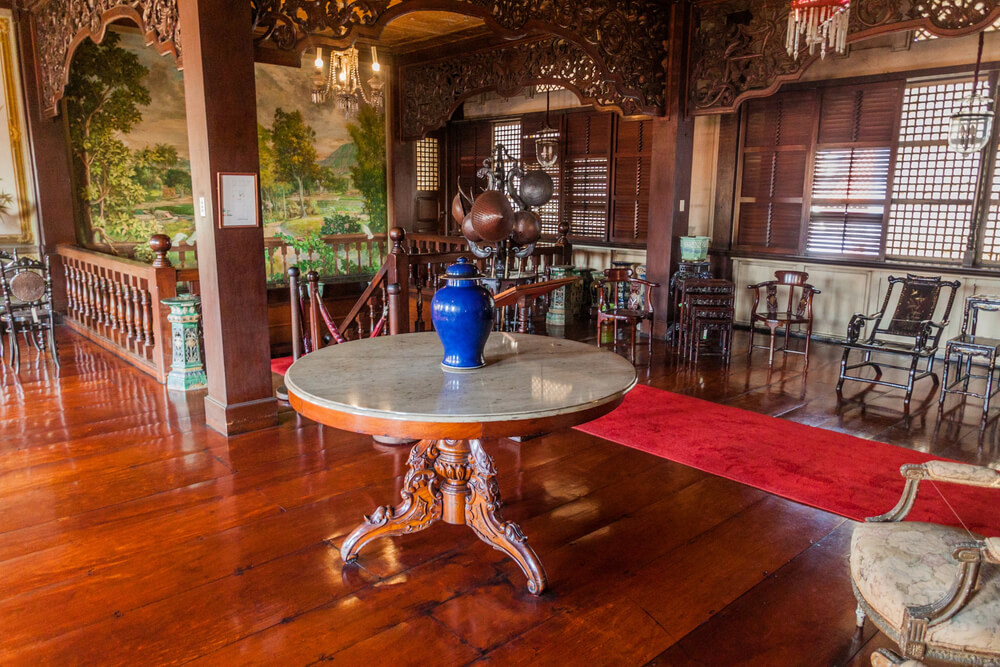
It’s not common for a restaurant to be a destination unto itself, but Barbara’s Heritage Restaurant is an Intramuros institution.
On the grounds of Casa Manila, Barbara’s serves up a variety of traditional Filipino and Spanish dishes. But this is more than just a restaurant. The building houses an exclusive attic museum and art gallery just dripping with character. Every evening, they offer a combination buffet and cultural dance show featuring traditional Filipino music and choreography.
If you really can’t get enough of the upscale colonial vibe, Barbara’s also doubles as a bed and breakfast. This means that you can quite literally spend a night at the museum.
Palacio del Gobernador (Governor’s Palace)
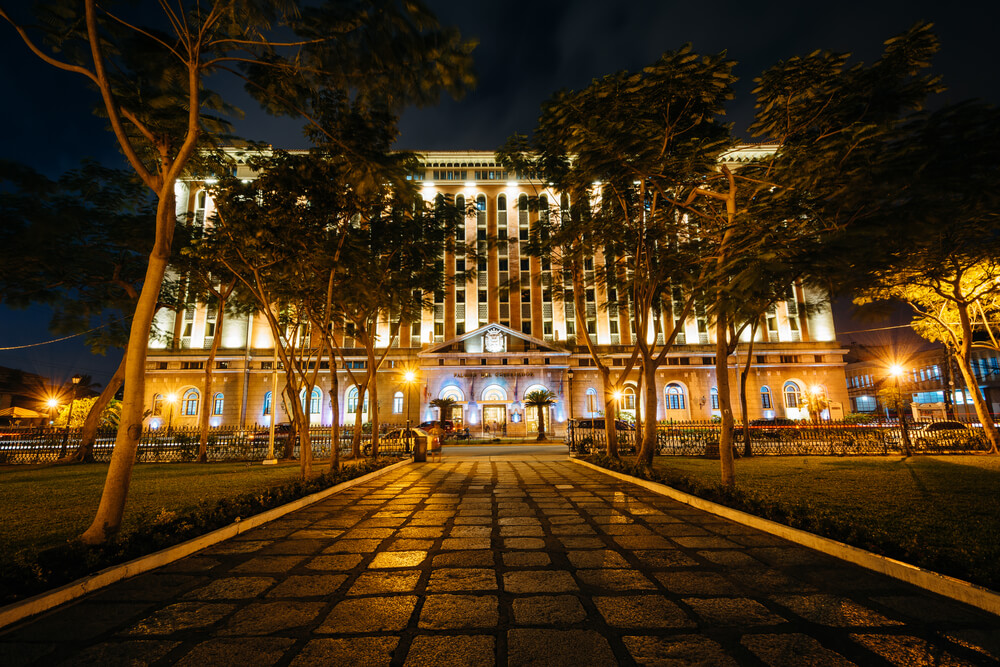
This was the home of the governor’s mansion until 1863, when a powerful earthquake sadly destroyed it. Fortunately, like the rest of Intramuros, it was rebuilt — in this case, in 1976.
It is currently home to various administrative offices and retains the same colonial flavor as the surrounding streets. At the very least, it’s worth a visit just to snap a few pics.
Museo de Intramuros
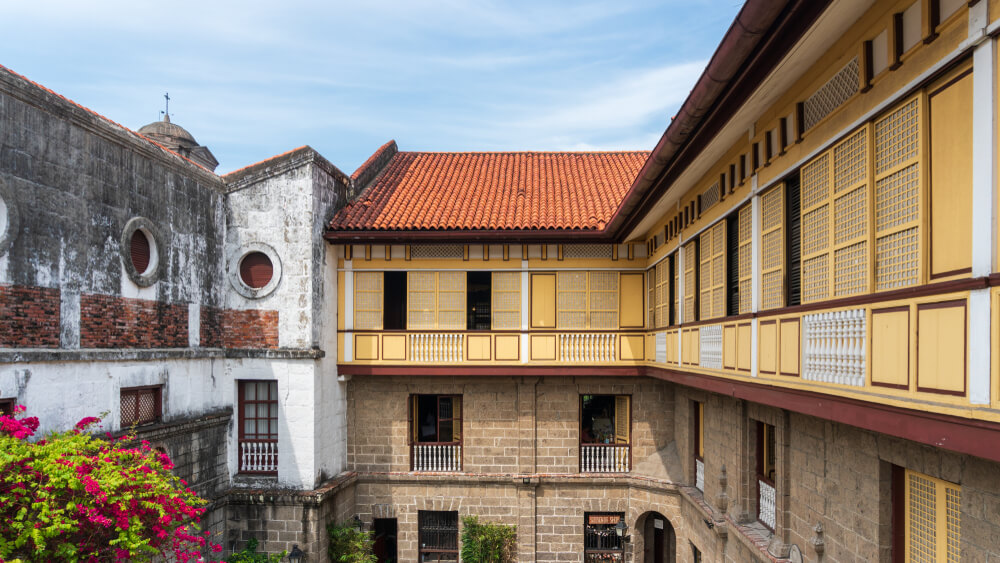
Built atop the ruins of the San Ignacio Church, the Intramuros Museum houses three stories worth of religious artifacts, colonial-era paintings, and historical depictions of Intramuros’ history.
A relatively new attraction — though elegantly designed to fit in with the area’s colonial Spanish decor — it was both created and run by the Intramuros Administration, an organization dedicated to the preservation of the area and its legacy.
For dedicated history buffs and fans of religious art, this is one museum you won’t want to miss.
Light and Sound Museum
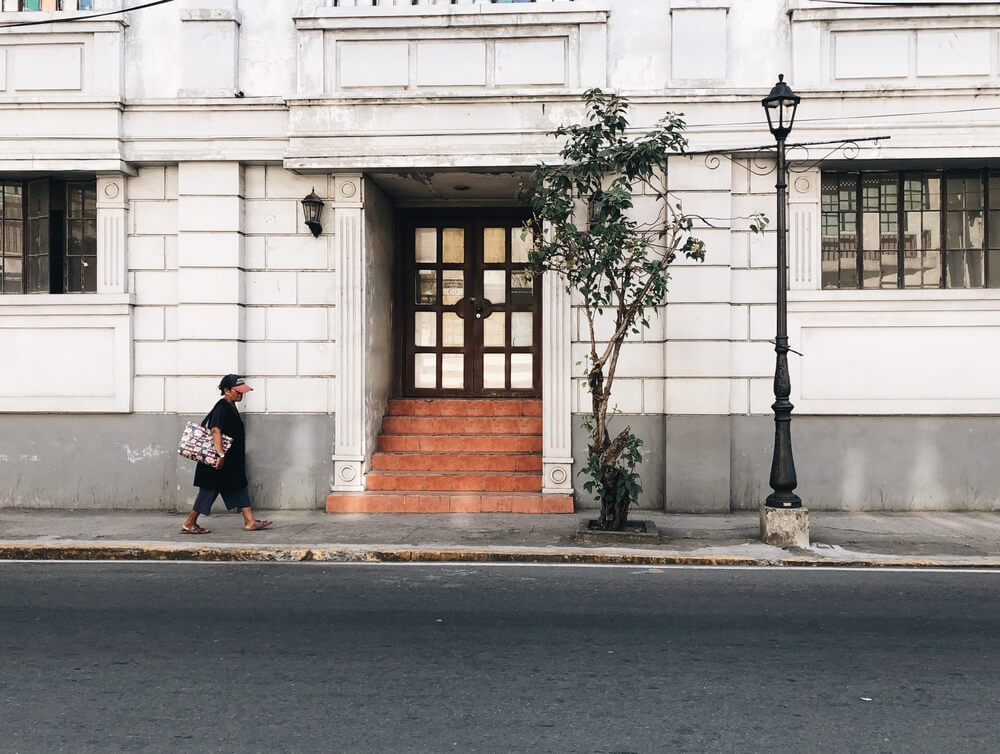
Featuring light, sound, and robotics, this museum showcases the life and events of Jose Rizal — a national hero and inspiration for Philippine independence. The exhibit is designed to create an interactive narrative of his backstory, incarceration and eventual martyrdom.
If you’re looking for some insight into modern Philippine history and politics, the Light and Sound Museum is an interesting and stimulating way to learn about one of their favorite sons.
Bahay Tsinoy
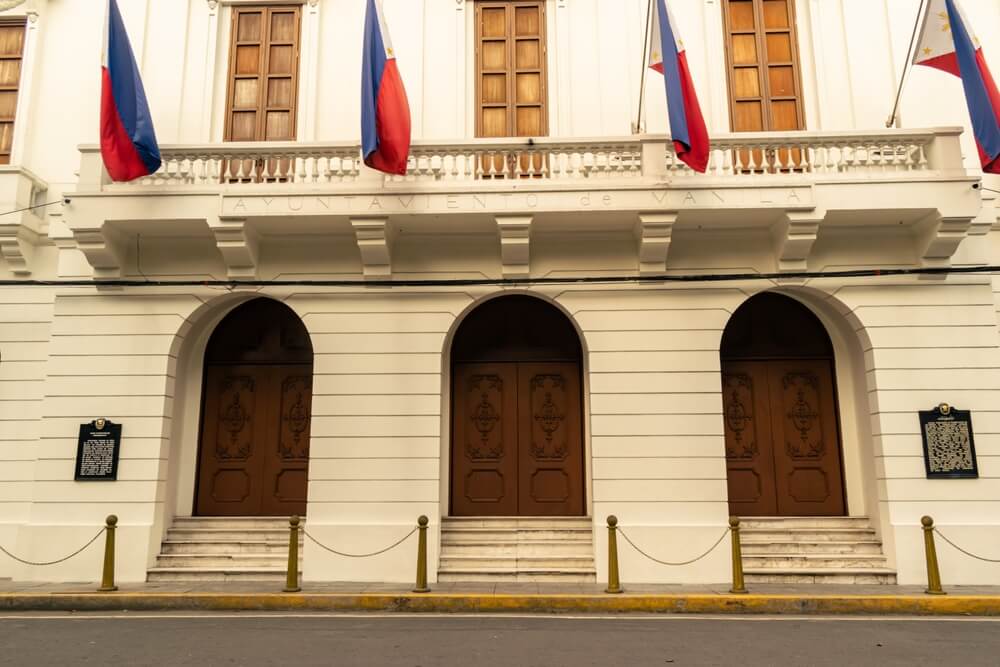
Spain wasn’t the only foreign nation to have a profound influence on Manila. Neighboring China has also had an effect on life in the Philippines, and this is commemorated at Bahay Tsinoy.
This is a museum that showcases Chinese contributions to the local culture, traditions and economy over the years. You can take in scenes depicting Chinese and Filipino interactions throughout their shared history.
Silahis Center
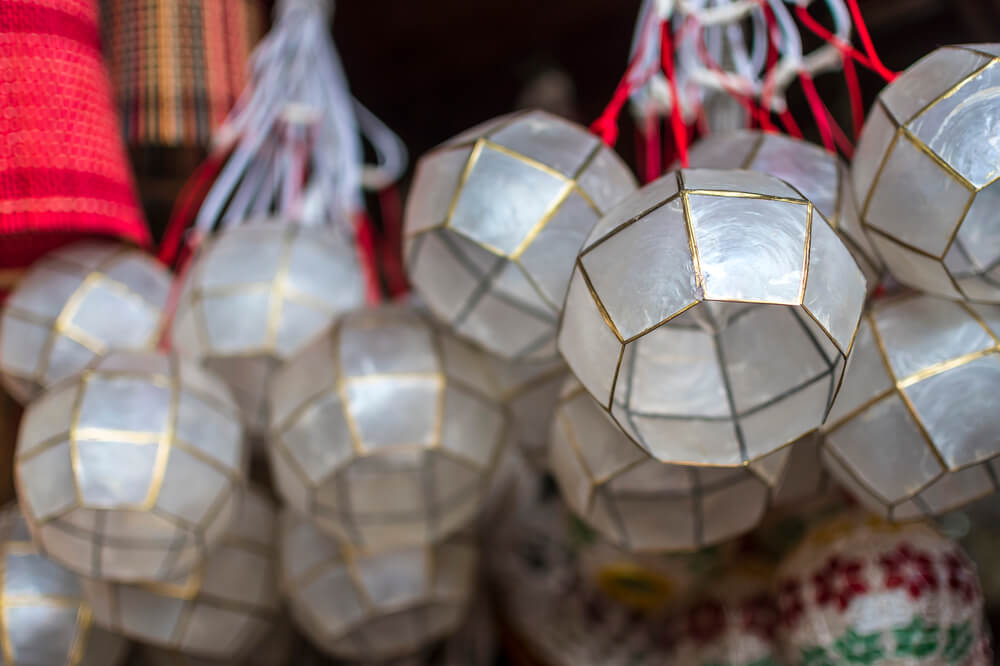
Located in a historic old stone and wood building, the Silahis Center is part museum, part antique store. There’s no entrance fee, and visitors are encouraged to admire their collection of Filipino art and artifacts — much of which is for sale.
This is a good place to see a variety of Filipino handicrafts with the option of taking home a souvenir or two. However, there’s no purchase required, and you can simply just browse their art gallery and window shop until your heart’s content.
Plaza Mexico
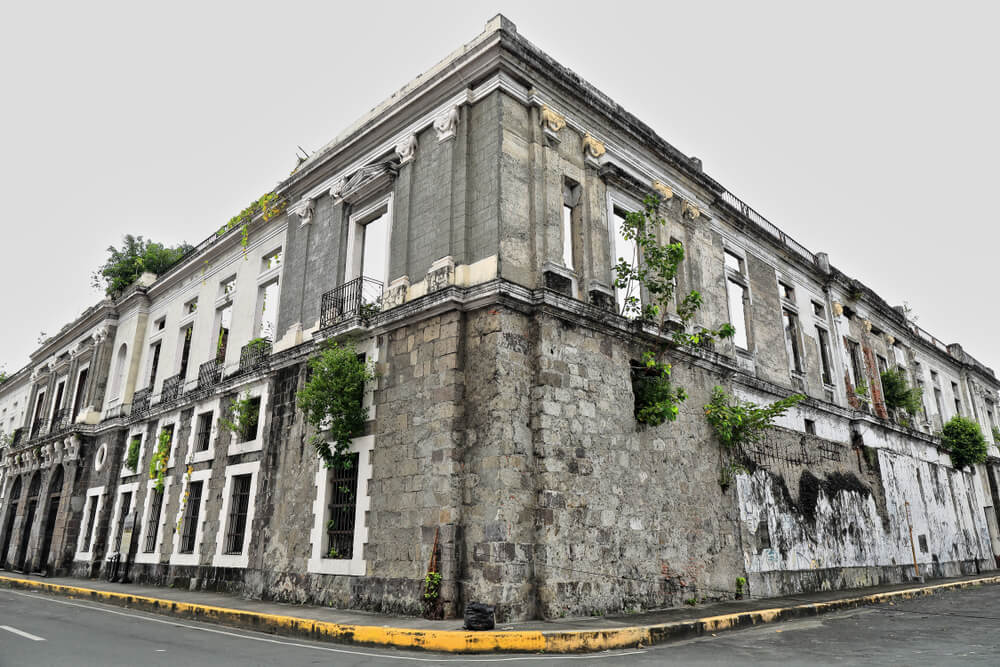
Located in the northeastern corner of Intramuros, Plaza Mexico is a leafy square commemorating the Manila-Acapulco galleon trade that spanned some 250 years.
This shade-covered park fronts the historic Aduana Building (Customs House) and is home to several monuments relating to the relatively uncelebrated ties between Mexico and the Philippines.
Map of the Intramuros neighborhood
To give you a visual overview of the Intramuros neighborhood, here’s a useful map that will help you plan your route.
How to get to Intramuros, Manila
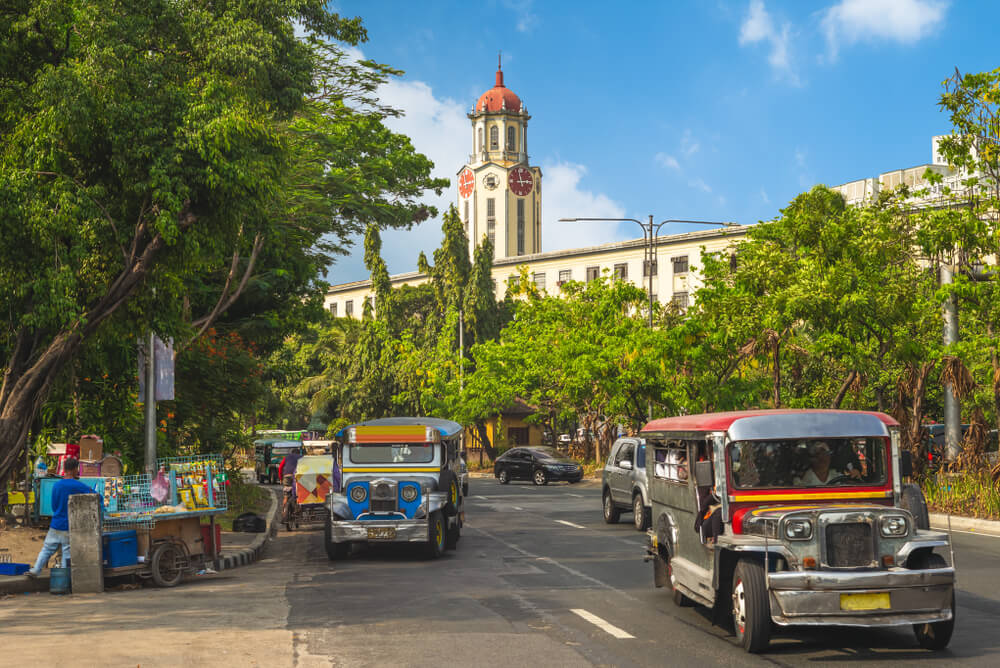
Most international travelers arrive in Manila via Ninoy Aquino International Airport (IATA code: MNL). This is the primary airport for the capital, with lots of airlift on both domestic and international carriers.
To get to Intramuros from the airport, you could either take a long bus ride (up to an hour) or a short taxi or shuttle ride (approximately 15 minutes). There are also a few public transportation options in Manila to get you around the city easily.
Once inside the walls of Intramuros, you can easily get everywhere on foot. Or, if you prefer to take the kitschy tourist route, you can also hire a horse and buggy (with a driver) to ferry you around between sites.
Intramuros weather
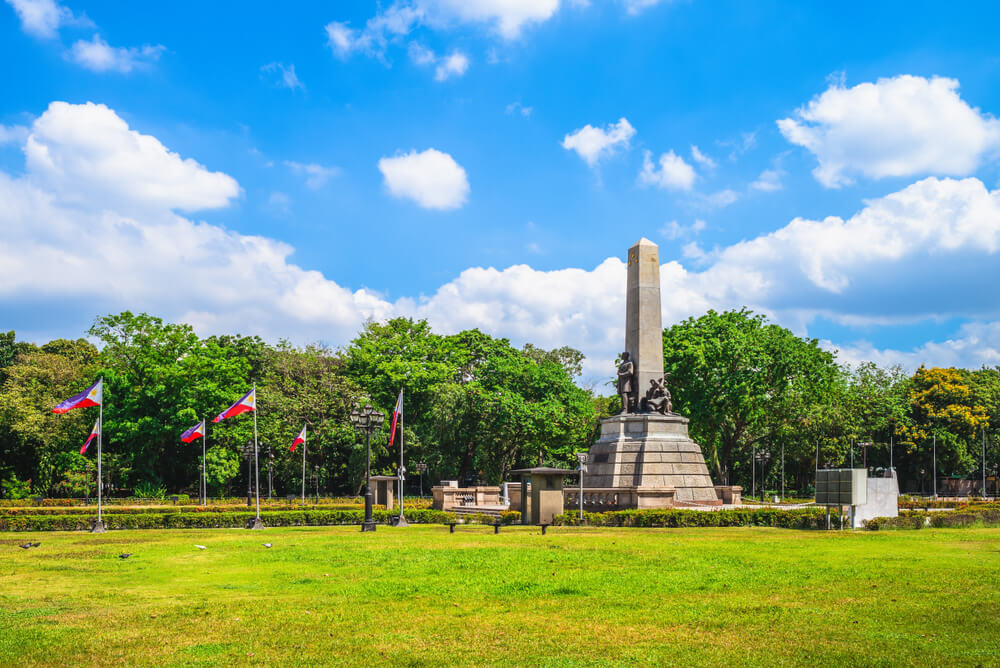
Visitors to Intramuros should be prepared to tour in significant heat and humidity. ]
There are two seasons in Manila — wet and dry. The dry season lasts from December to May, while the wet season goes from June to November.
Practically speaking, neither should impede your ability to tour Intramuros regardless of the time of year.
Packing list essentials for Intramuros, Manila
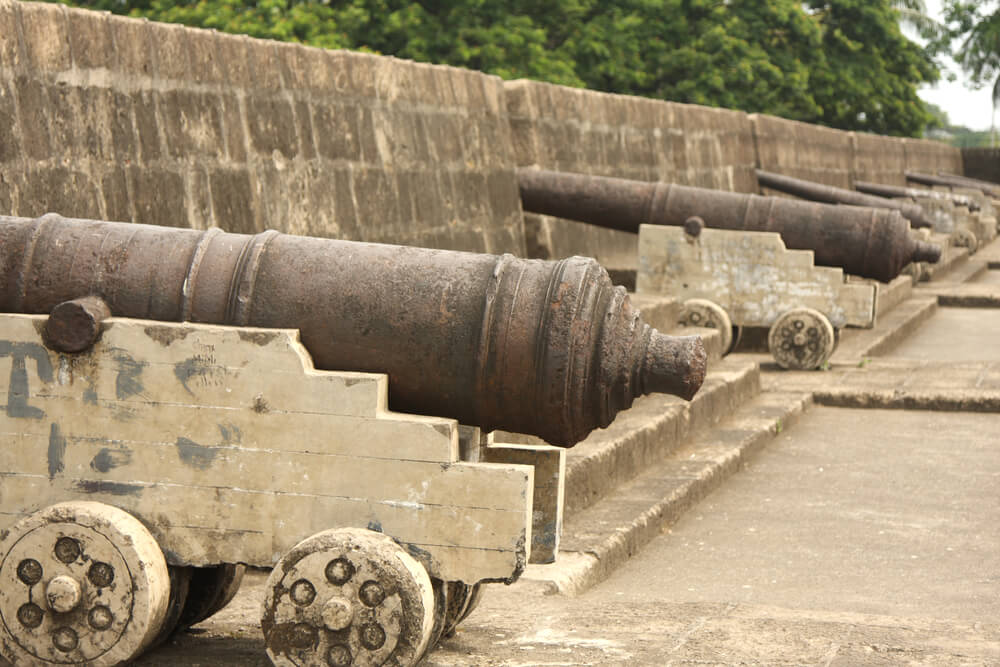
Intramuros is both compact and walkable, but having some essentials can make your explorations all the more pleasant. Here are some suggestions:
- Breathable, lightweight clothing: Regardless of the time of year, it will be warm and likely humid. Having lightweight, moisture-wicking clothing can keep you feeling fresh for longer.
- A rain poncho or waterproof jacket: Any time of year—but particularly during the wet monsoon season—sudden heavy showers can pop up. Having the right jacket or poncho will leave you prepared for that possibility.
- Long pants/Cover-up: If you intend to visit the cathedral or other religious sites within Intramuros, having long pants or a cover-up will show the appropriate respect.
- Comfortable, sturdy shoes: Intramuros is best explored on foot, which means you’ll want your comfiest, sturdiest shoes to avoid soreness and blisters.
Practical considerations
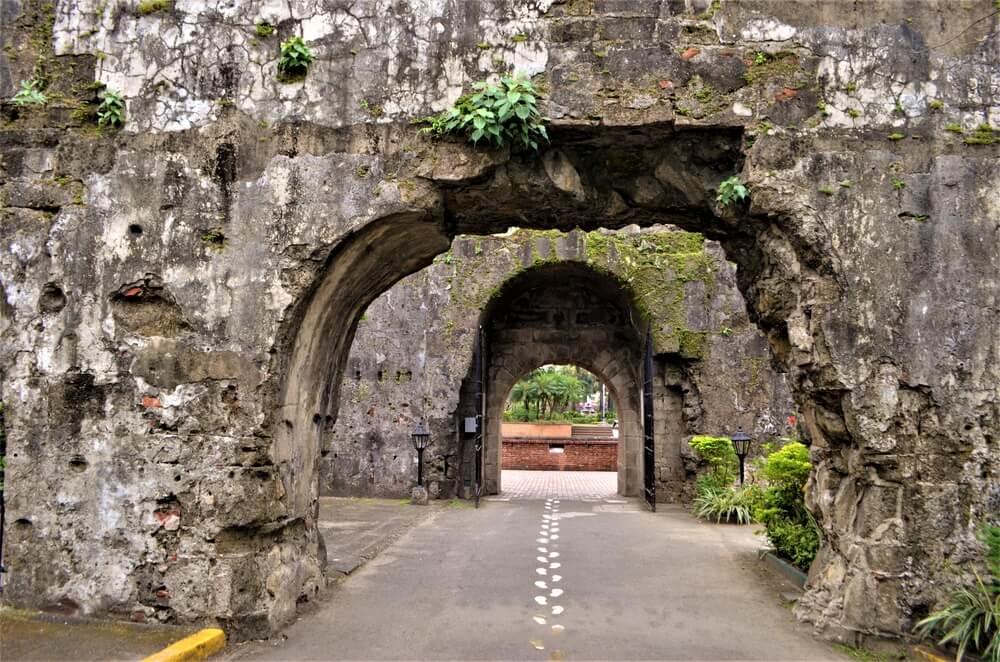
As in any other location that attracts tourists, be mindful of your belongings and don’t flash a lot of money or goods around. While crime isn’t a major issue, there’s no need to make yourself a potential target for opportunistic pickpockets.
Even though distances around Intramuros aren’t great, you should pace yourself and stay hydrated at all times.
Final thoughts on Intramuros
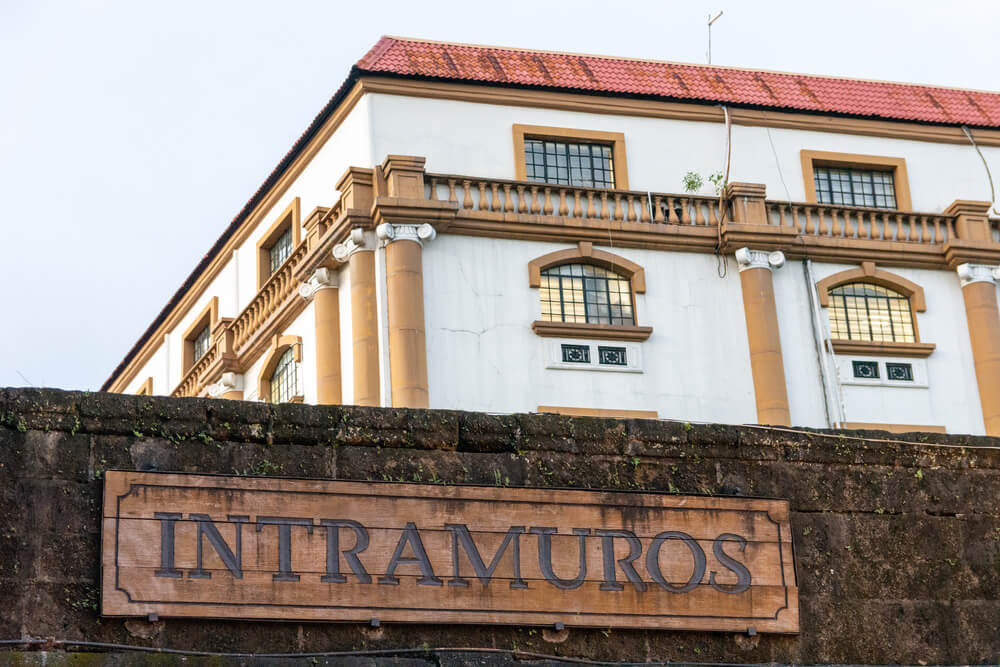
Modern Manila is a pulsating, congested, and noisy fusion of modern buildings and glitzy shopping malls. But given the history and tragedy within the ramparts of Intramuros, now you can see why you should leave at least one day to explore Manila as it used to be and pay your respects to the city inside the walls.
FAQ
Sure, it’s possible to see it all in one day, but it will feel rushed. If your itinerary allows, set aside 1.5 days for Intramuros and take in nearby Rizal Park with the rest of the time.
To reach Intramuros from the airport, you can either take a rather tedious bus ride (the cheapest option) or a shuttle that will get you there in a fraction of the time.
Without a doubt, Intramuros is the premier site of interest for tourists visiting Manila. Combining centuries of history, this is the top must-see attraction in the city.



